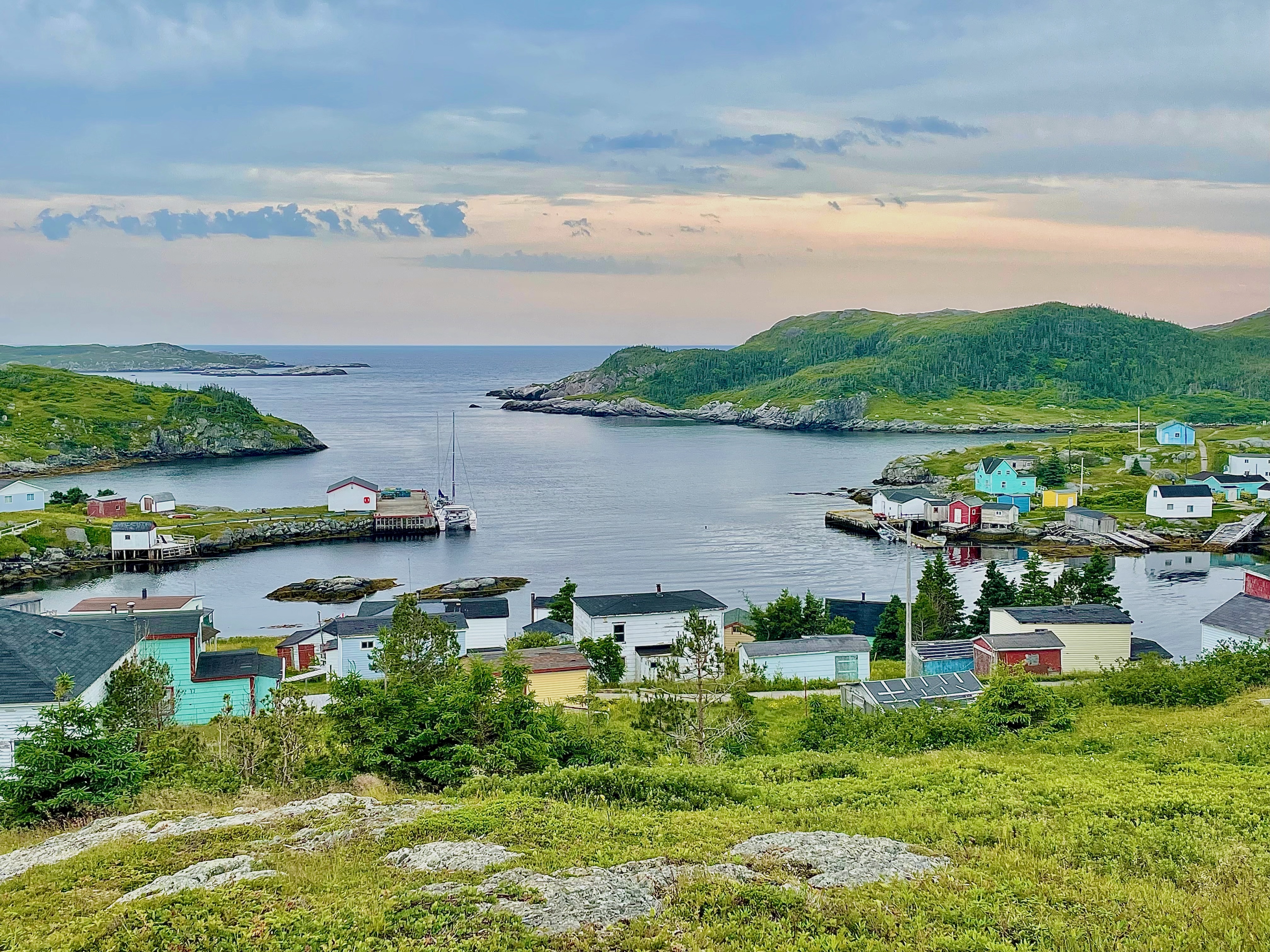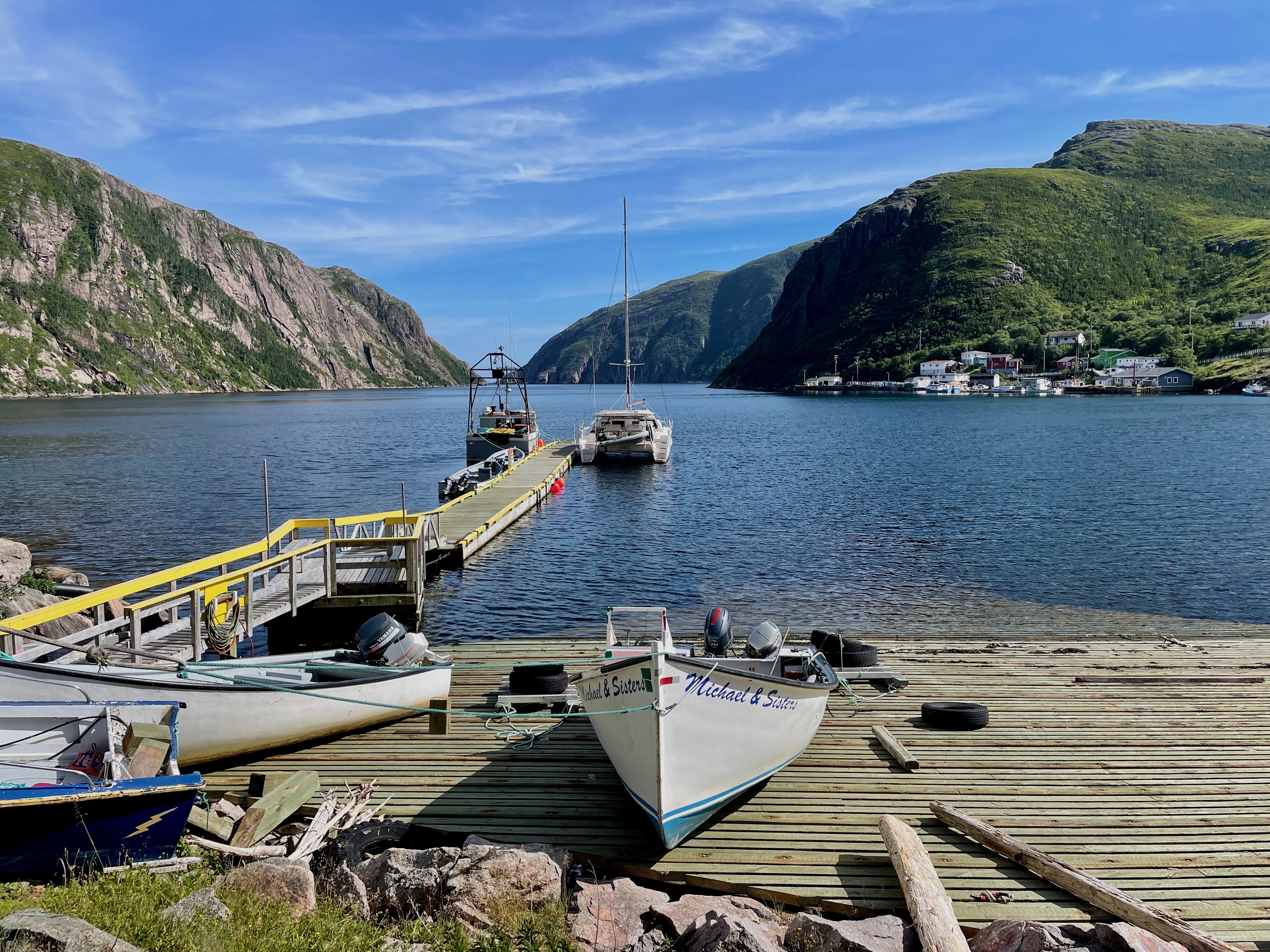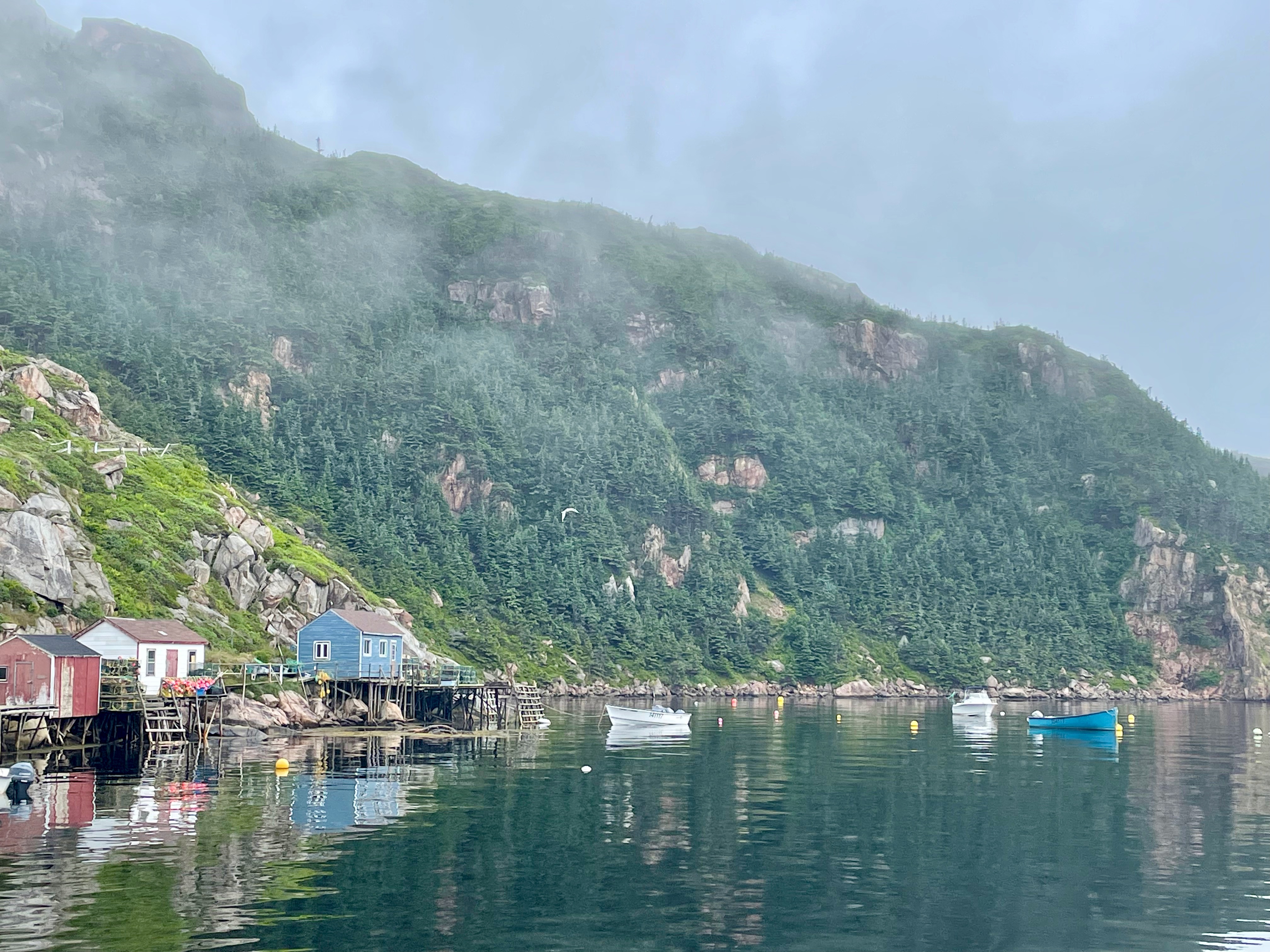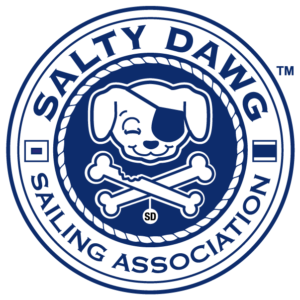|
CRUISING NEWFOUNDLAND'S SOUTHWEST COAST Written by Doug Weibel, Frolic
The CCA’s Cruising Guide to Newfoundland is a great resource. The main challenges for cruising Newfoundland’s south coast are deep anchorages, cold offshore waters, a coastline with many rocks and ledges, frequent fog and a scarcity of services ashore. In exchange you get a stunningly beautiful cruising ground sparsely populated with very friendly people requiring no long offshore passages. With just the two of us aboard, and with favorable winds, we made swift progress northeastward along the coast of Nova Scotia after clearing into Canada at Shelburne. Anchoring overnight only in Liverpool and LaHave before passing through the Saint Peter’s Canal and into the Bras D’or lakes, we felt like nature was urging us ahead. If you hustle through Nova Scotia like we did you could tack on a few weeks in Newfoundland after the Downeast Rally this summer, or go a bit earlier to better use the season. Though Newfoundland feels a world away, making the jump from Nova Scotia to Newfoundland’s southwest coast is not too daunting. Leaving Baddeck, the cruising center of the Bras D’or Lakes, at an appropriate time, you ride the current roughly twenty miles north-northeast through a narrow body of water, the Great Bras D’or, to the open Atlantic. Ninety miles carries you across the Cabot Strait to the southwest corner of Newfoundland. Port aux Basques is a popular landfall but we went just a bit further to Isle aux Morts, population <400. Radar is really important here, both for dealing with the fog and for checking the frequently encountered offset errors in the charts. Several times in thick fog when our plotter informed us that we were sailing on dry land, radar kept us safely in the center of the channel. Chart notes indicate that some of the hydrographic data dates back to the 1920s, or even the 1860s, and that the GPS datum may be off, and high fjord walls can degrade GPS performance.
Recreational cod fishing is open here Saturday through Monday. We arrived on a Saturday and our first visitor, Ron, was quick to offer us some fresh cod. Rather than accept the cod we learned about bottom fishing, something we had never done before, and accepted a cod jig to try ourselves. We were assured that if we went out the next morning we would easily catch our own, and that was the case. Our next visitor, Darrell, was disappointed to have missed the opportunity to give us a cod jig so he began quizzing us. After finding out we had tried neither moose nor salt-cod, he was off to his house to collect some for us to try. Other conversations on the wharf taught us about the local heroes, the Harveys, local cuisine specialties like pea soup with dumplings, which we tried later that day at the community center, and the upcoming Come Home festival.
While small, Francois seems to have an energy about it. There are even a couple of AirBnbs in town. Tiny McCallum, though, may be headed towards the ranks of the abandoned outports. We had a long conversation with Mary, the harbor supervisor. She said we were just the fourth cruising boat to visit that year. They still have a store and the ferry comes in most days, but she was melancholic about how much longer the town might be viable. Half our nights we spent in outports, either inhabited or abandoned, where there is generally a wharf or dock available for tie-up - inexpensive or free. Other nights we spent searching for the perfect anchorage; a cove jutting off from a fjord where you can anchor yards from the base of a waterfall with good holding. All of those components are readily available though getting them all in the same place is the challenge. Some anchorages like up White Bear Bay offer easy anchoring in modest depth with good holding and swinging room but you are located a good half mile away from the nearest waterfall! Other spots like the northwest terminus of Little Bay will have a spot you are dying to stay overnight, a beautiful cove where you could have a bridal veil waterfall raining down yards off your stern. But in charted depths of 25’, we found only water 60’ or deeper. Bring some long lines for shore ties as you will want them in some anchorages. The Labrador current brings cold arctic waters around the southeast corner of Newfoundland and offshore eddies erratically pull cold water all the way down the southwest coast. We saw water temperatures down into the forties. However, just a few miles up a fjord water temperatures push above seventy. We didn’t expect to go swimming in Newfoundland, but in many places it is quite pleasant. The country is very wild. Hiking through forested land is impractical as the forests are too dense. Areas with more tundra make for some excellent hiking. High waterproof boots are helpful as a lot of the tundra seems like a thick mat of vegetation floating on a pool of soupy mud. Look out for caribou and fascinating carnivorous pitcher plants. If you are lucky and the cloudberries are ripe, sweet mouthfuls are a huge bonus for your efforts in getting ashore for a hike. We didn’t pursue it but rivers and ponds inland from the coast are said to have excellent trout fishing. Sailing the southwest coast of Newfoundland is accessible for average cruisers with a sense of adventure, but there are some things to keep in mind. Services are very limited. Fuel and water are available in only a few locations. Temperatures can vary considerably and frequent fog and rain should be expected. Having, and knowing how to use, a radar is very important. Bring a second anchor and lines for shore ties. Wharfs, particularly in abandoned outports, may be in poor condition, so have either an abundance of fenders or a good fender-board setup. Finally in remote areas you will not have cell service and VHF communications will likely not work when surrounded by high hills. Another boat may not happen by for a long time. Weather can get nasty and you don’t want to be caught unaware, especially when running offshore. We highly recommend some sort of satellite communications gear to receive weather information and for emergencies. We did see some degraded performance with our Iridium Go due to high fjord walls limiting the elevation angles at which satellites could be seen but were always able to get weather downloaded if with a bit of delay. We have had Frolic in the Caribbean since the fall of 2022 but we are headed north and hope to be back up to Newfoundland this summer! |


 The first joy in cruising Newfoundland is the friendliness and helpfulness of the people. Tied to the wharf in Isle aux Morts, we had numerous people walk up and strike up a conversation. These are a seafaring people. A common theme was that the closure of the cod fishery forced people to move away for work, often working the shipping routes in the Great Lakes or in other fisheries. After retiring, they all move back to Newfoundland.
The first joy in cruising Newfoundland is the friendliness and helpfulness of the people. Tied to the wharf in Isle aux Morts, we had numerous people walk up and strike up a conversation. These are a seafaring people. A common theme was that the closure of the cod fishery forced people to move away for work, often working the shipping routes in the Great Lakes or in other fisheries. After retiring, they all move back to Newfoundland. Little of the southwest coast is accessible by road. Dotted with small towns accessible only by boat or helicopter, called outports, the population is small and dwindling. While small, Isle aux Morts feels bustling compared to Francois and McCallum, with populations of roughly 96 and 26. It is difficult to describe a setting as picturesque as Francois. Thousand-foot hills rise up steeply on all sides of the harbor, cloaked in lush forest and tundra. Colorful houses cling to the hillsides and a fleet of hard-used fishing boats are tied up to wharfs and drug up a large wooden ramp. There is a post office and a general store, but no restaurant, cafe, bar or other social meeting place save the church. Yet it is easy to understand how having your sense of home tied to a place like this could make the hardships acceptable and why the tiny outport endures.
Little of the southwest coast is accessible by road. Dotted with small towns accessible only by boat or helicopter, called outports, the population is small and dwindling. While small, Isle aux Morts feels bustling compared to Francois and McCallum, with populations of roughly 96 and 26. It is difficult to describe a setting as picturesque as Francois. Thousand-foot hills rise up steeply on all sides of the harbor, cloaked in lush forest and tundra. Colorful houses cling to the hillsides and a fleet of hard-used fishing boats are tied up to wharfs and drug up a large wooden ramp. There is a post office and a general store, but no restaurant, cafe, bar or other social meeting place save the church. Yet it is easy to understand how having your sense of home tied to a place like this could make the hardships acceptable and why the tiny outport endures.
